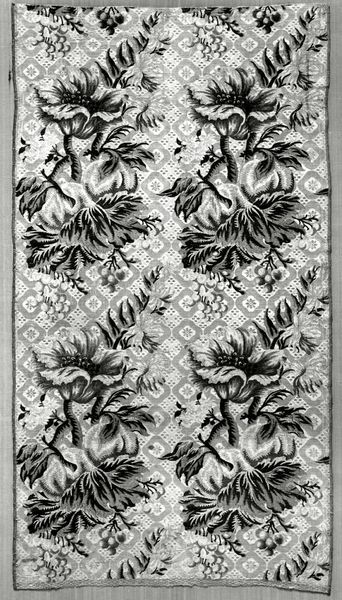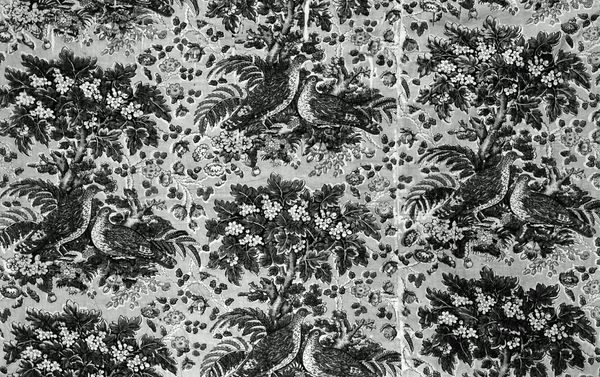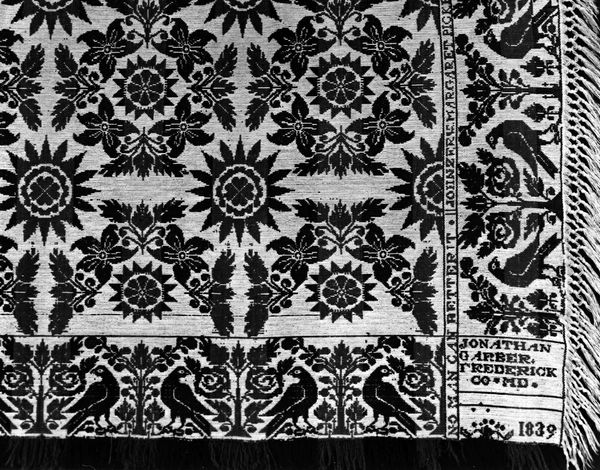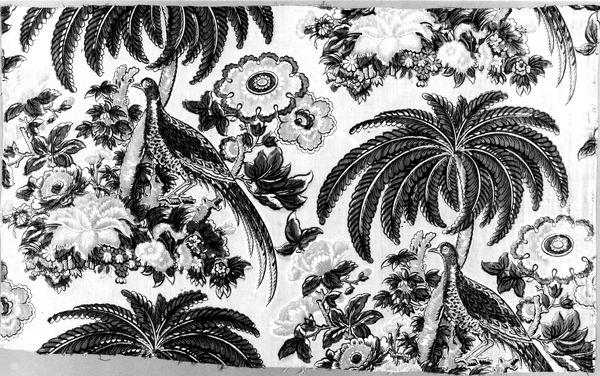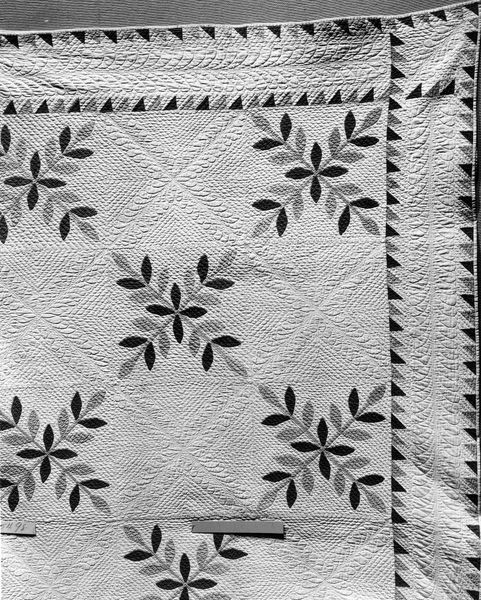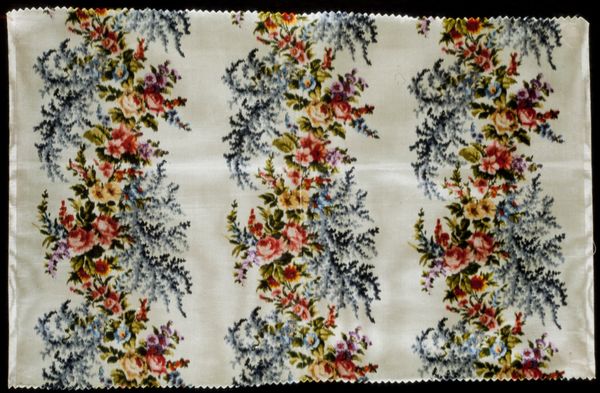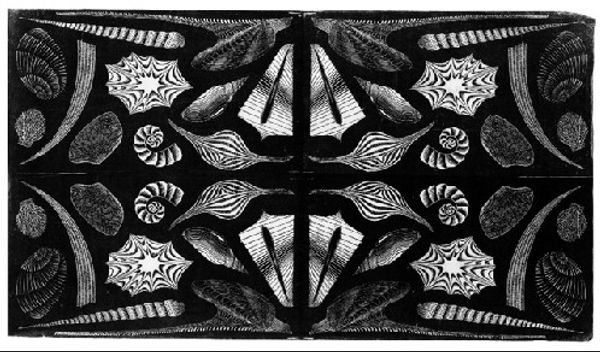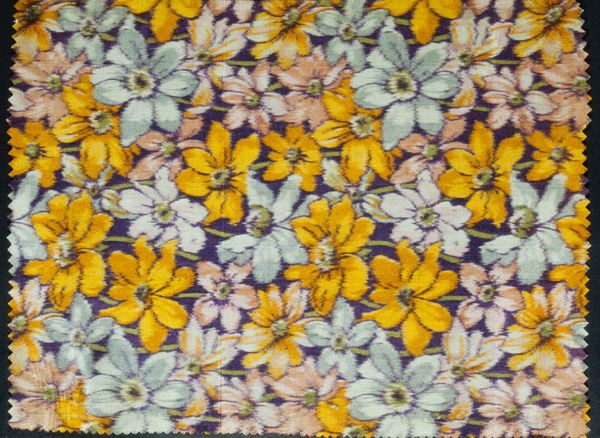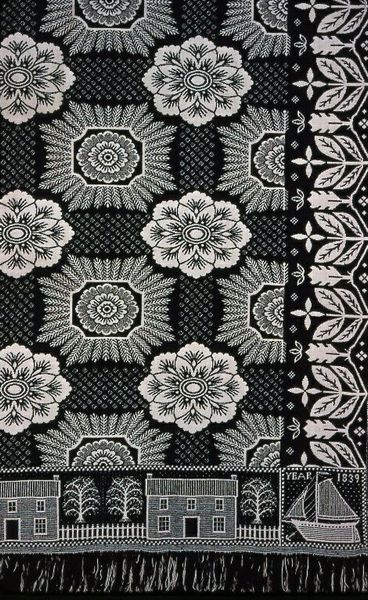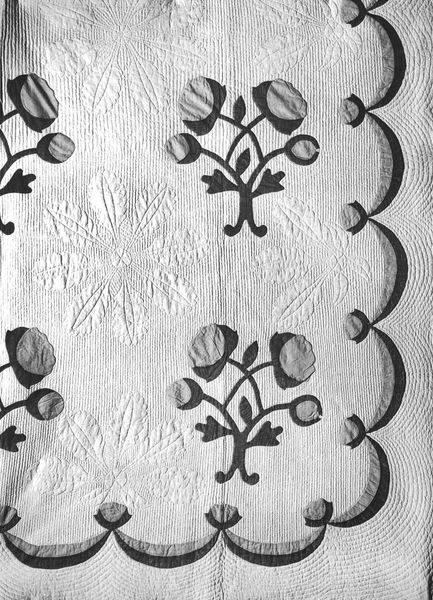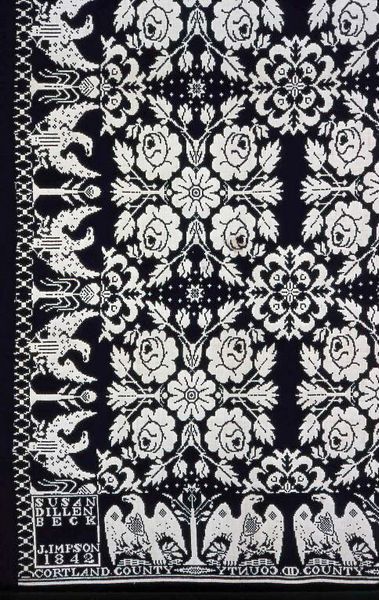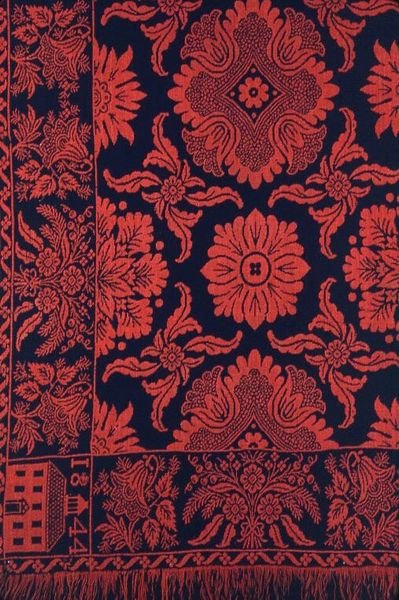
textile
#
landscape
#
textile
#
organic pattern
#
decorative-art
Dimensions: 152.5 × 55.6 cm (60 × 21 7/8 in.) Repeat: 44.5 × 26.6 cm (17 1/2 × 10 1/2 in.)
Copyright: Public Domain
Editor: Here we have an anonymous textile panel dating back to about 1734-1736. The mixed media, including weaving, presents a repeating pattern. What strikes me is the interplay of floral motifs with miniature landscapes. How do you interpret this panel from a formal perspective? Curator: Intriguing observation. We should focus on its structural elements, primarily the complex juxtaposition of scales. Observe how the macro scale of flora acts as a stage for micro scenic representations. It's more than decoration; it’s a constructed reality presented through deliberate compositional choices. How does the contrast in scale affect your perception of space? Editor: It definitely creates a sense of depth and distance. The landscapes nestled within the blooms almost feel like a dreamlike, separate world. Is the black and white coloration significant to this reading? Curator: Absolutely. Reducing the color palette amplifies the focus on texture and form. The intricate details of the weave create subtle shifts in value that accentuate the relief-like quality of the pattern. Furthermore, what does it tell us when natural and architectural elements are of a singular hue? Editor: I suppose it unifies them, collapsing the distinction between the organic and the constructed. Is it then a dialogue about human interaction with nature? Curator: Precisely, it subtly undermines hierarchical readings and proposes a structured harmony, but that exists solely through visual experience and the qualities of the chosen media, not historical accounts or biographies. Does exploring the structure change your first impression? Editor: Yes, greatly! I initially saw it as purely decorative, but now I see it as a sophisticated commentary presented through careful composition. Curator: And that, ultimately, is the value of a Formalist analysis: learning that decoration and intent are rarely separated by artists or designers.
Comments
No comments
Be the first to comment and join the conversation on the ultimate creative platform.
